In a time where the value of money seems to be uncertain, various questions about its future can arise. Our orientation towards contactless payments and intangible means of exchange is inevitable. However, this has led us to forget the rich history and graphic elements that can be found in cash. As a response, this project explores the design possibilities of paper money.
The Arabic Naksha is a utopian undertaking, initiating the creation of a common currency to be used by all countries of the Arab World. As a response to the conventions of money design bound by a framework of formal considerations, the project aims to create a hybrid system celebrating the region’s common threads while still conserving each nation’s particularities and cultural heritage.
Research for this work mainly tackled the question of authorship in the design of money. Indeed, the latter has been confined to a strong authoritative framework where strict rules must be followed to minimize counterfeiting. But this often results in repetitions of style, content, and layout. Between the promising cycle of “going safe” in design through imitation, and the crucial necessity of avoiding counterfeiting, most banknotes around the world end up resembling each other. Not only do they feature similar visual representations (portraits, landscape orientation, etc.), but security features also clash with the design.
The Arabic Naksha explores the design possibilities that can arise from such limitations. It employs security features as design tools rather than obstacles. For instance, the guilloché or intricate detailing—an overused money design feature—transform here into abstractions of various arabesque patterns, a prevalent visual motif in Arabic culture. Since the banknotes have the same size, a note’s value is graphically represented through an increase in the size of the arabesque patterns. The proposed design does without the usual representation of political figures and national landmarks, to emphasize instead each Arab country’s visual heritage that is relatable and familiar to its inhabitants, such as architectural styles and natural traits.
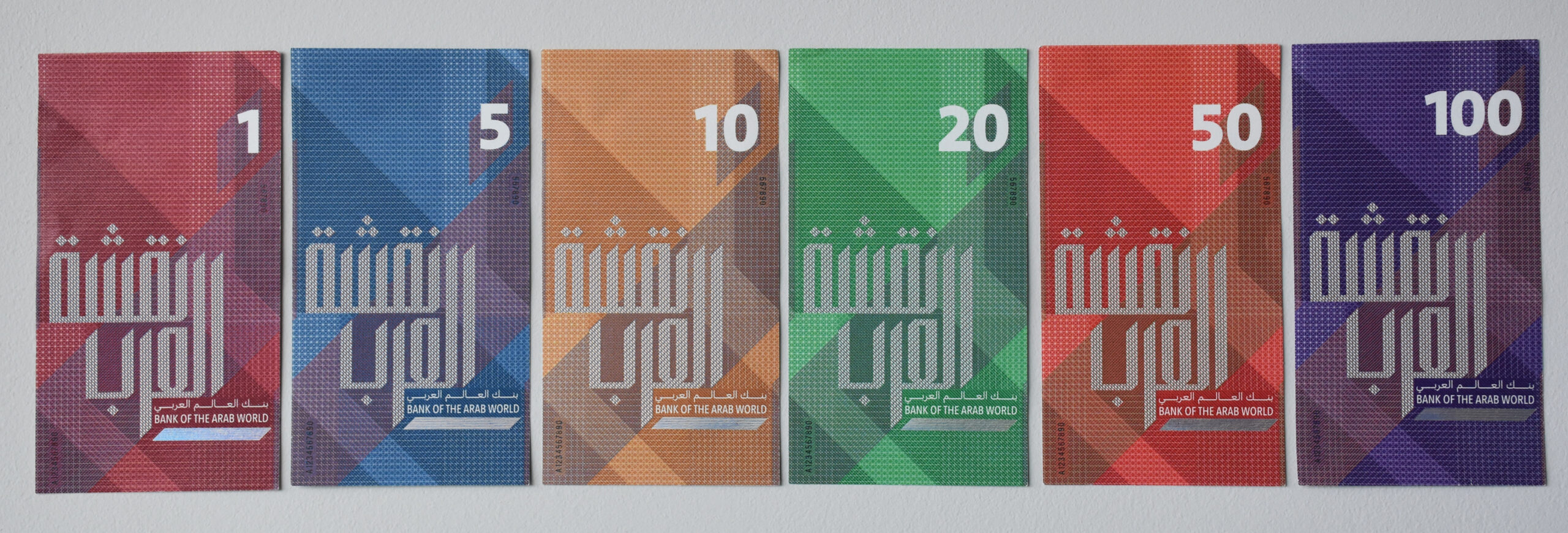
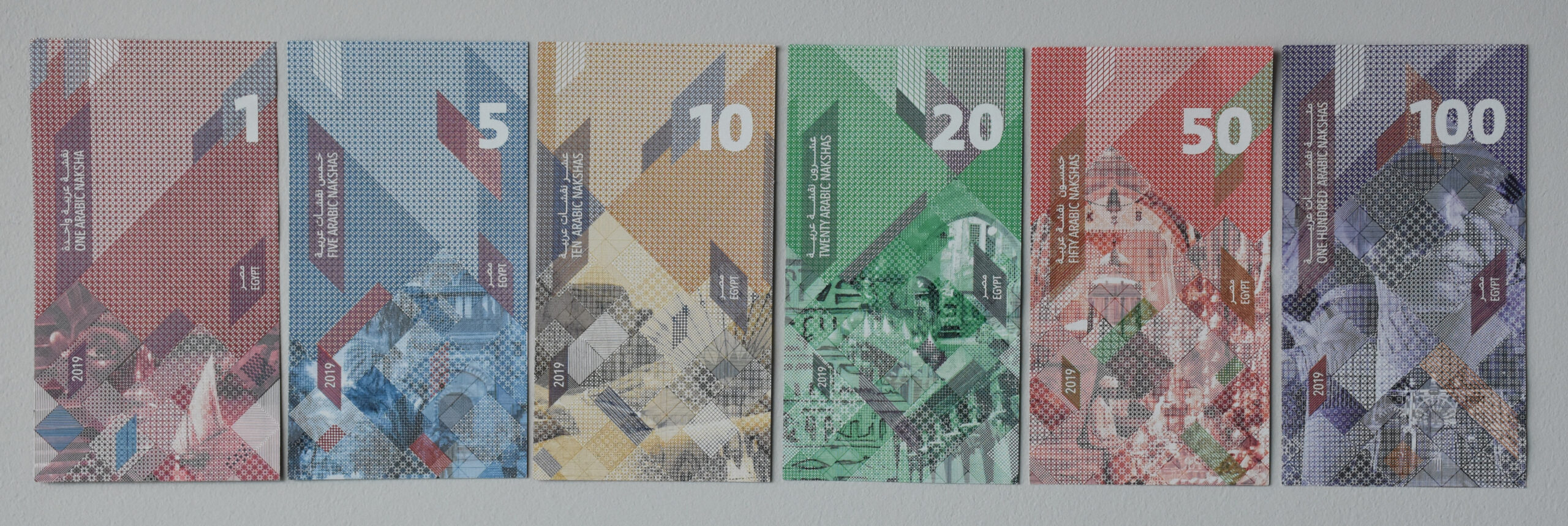
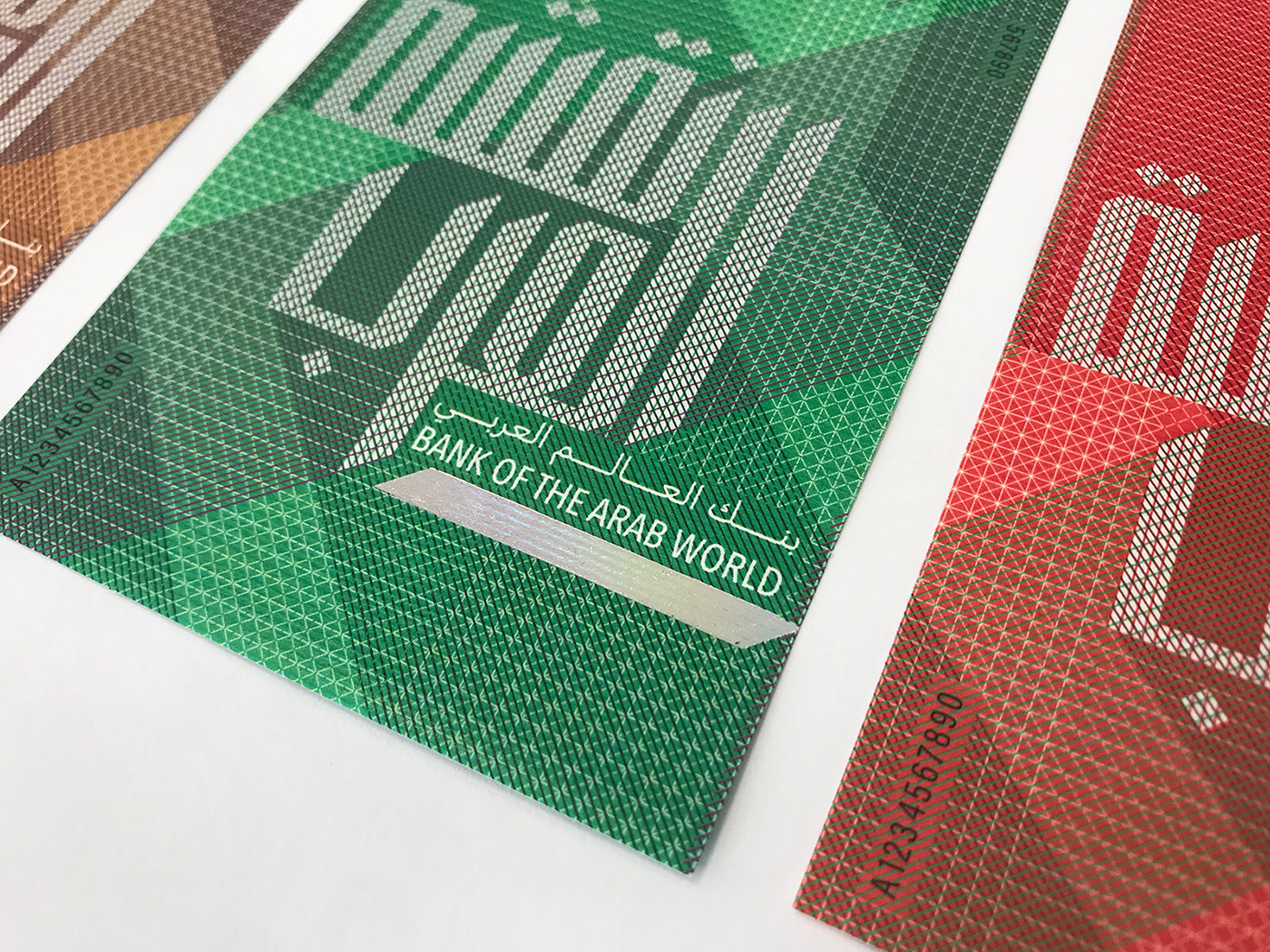
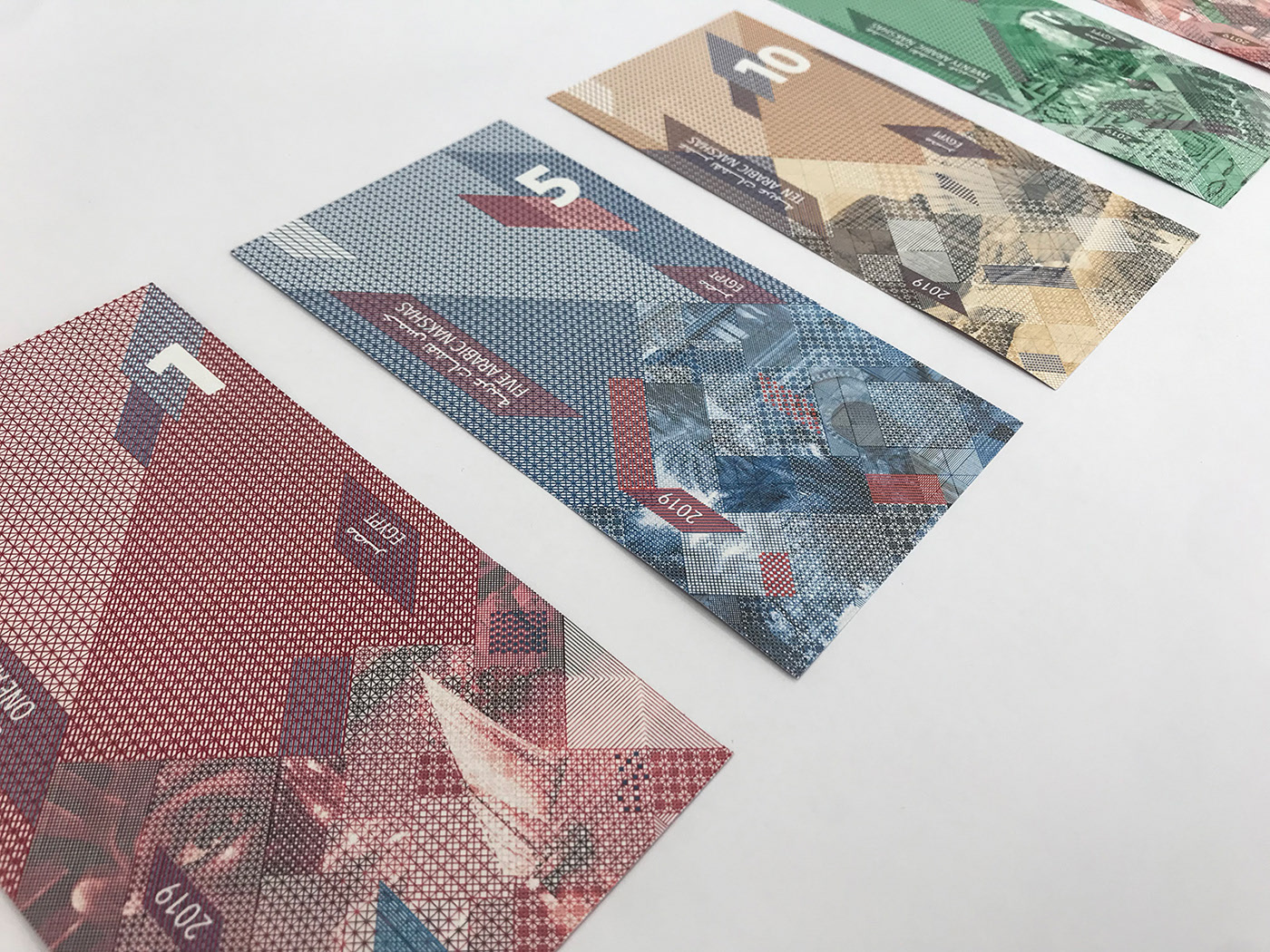
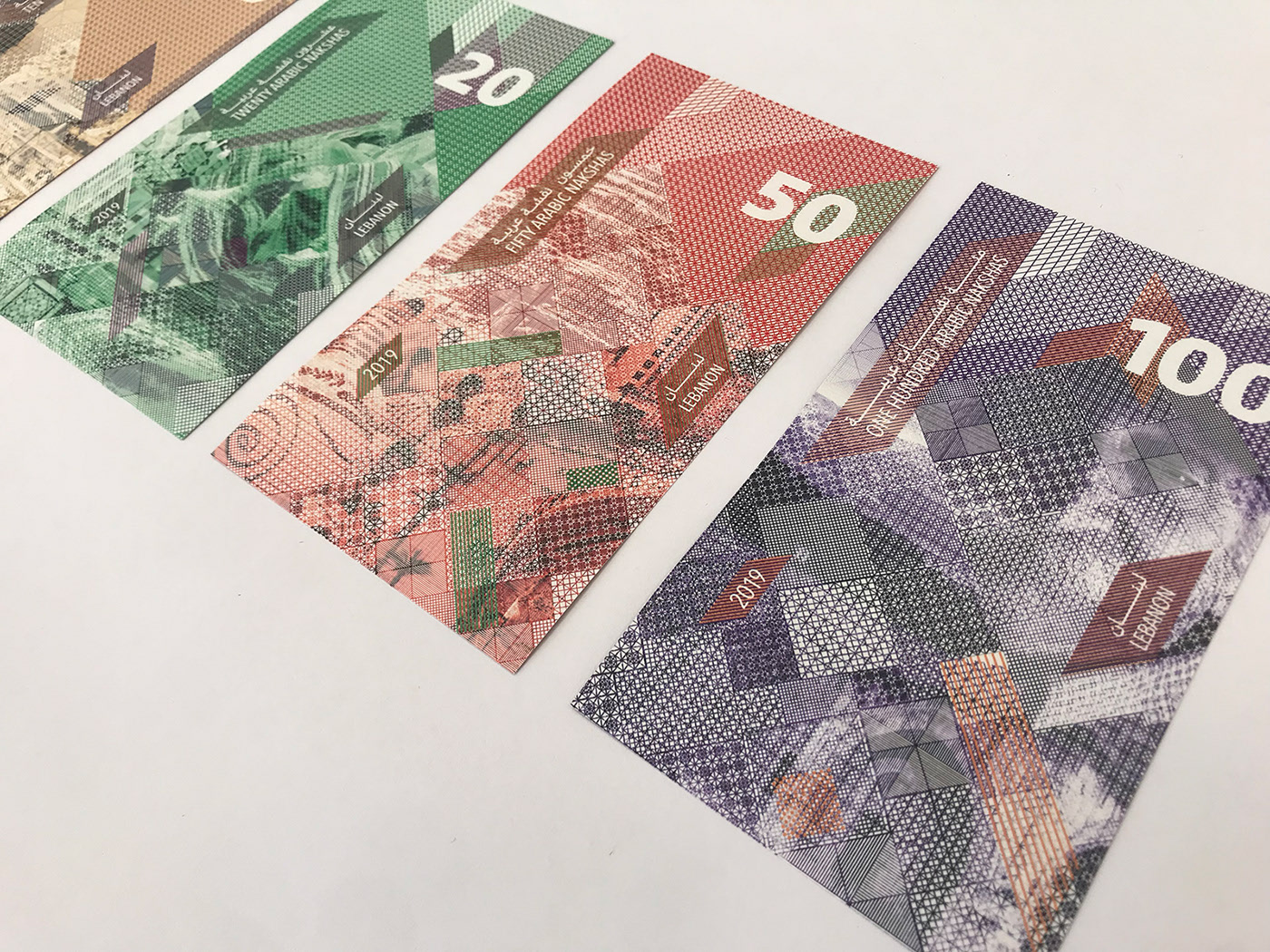
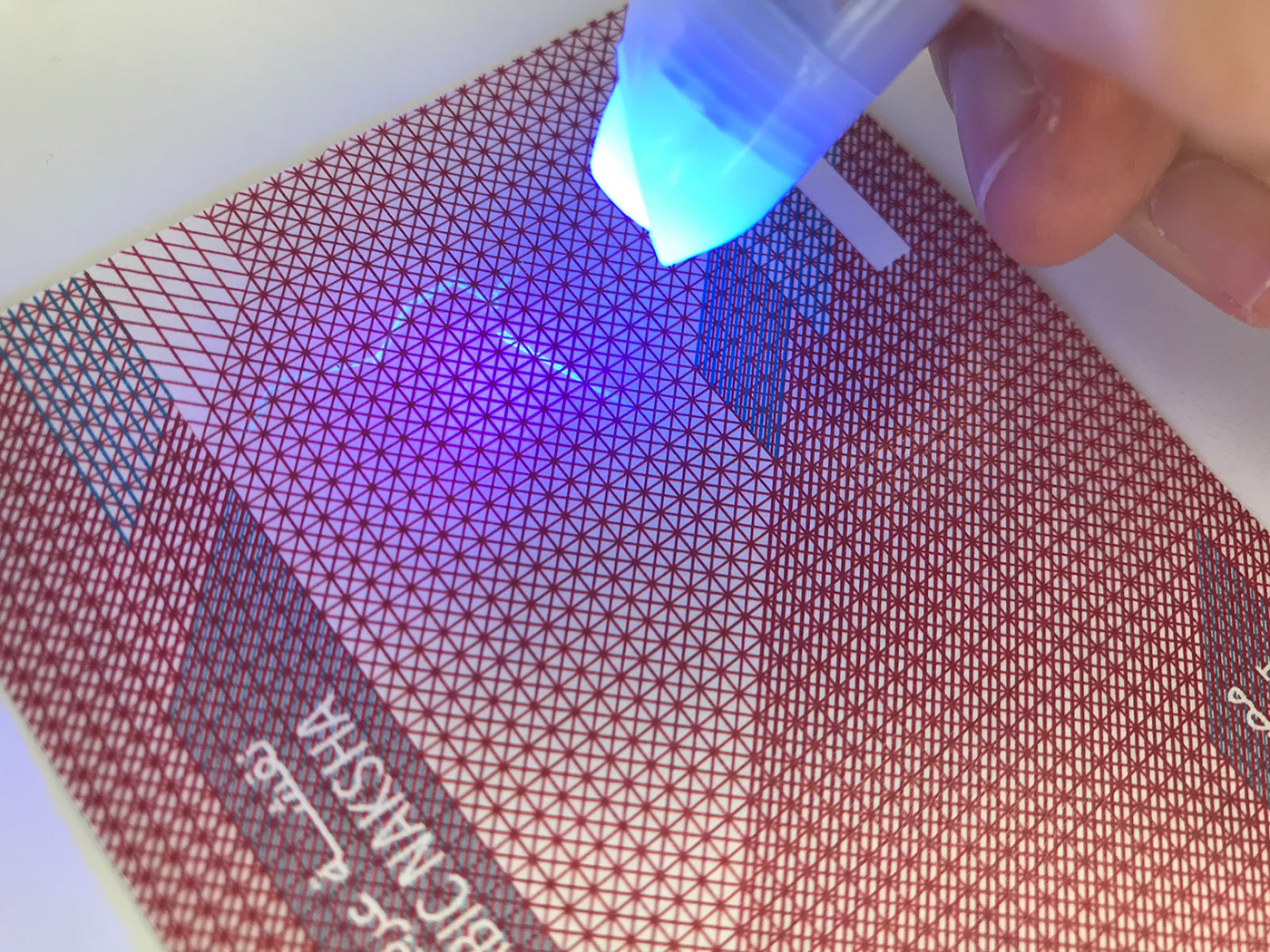
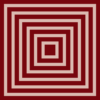
Tatiana Bohsali
Tatiana Bohsali is a Graphic Design graduate from the American University of Beirut. Throughout her studies and experience in advertising, she has developed an interest in exploring the interdependence between design and people. She is currently pursuing an MA in User Experience Design at the University of the Arts London.



